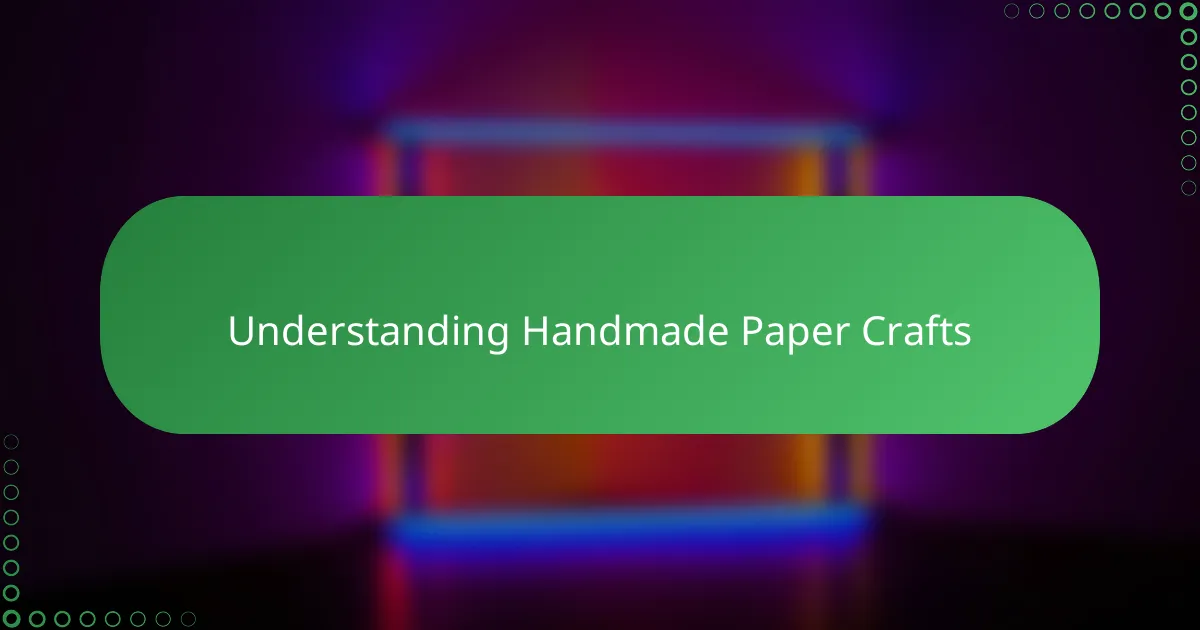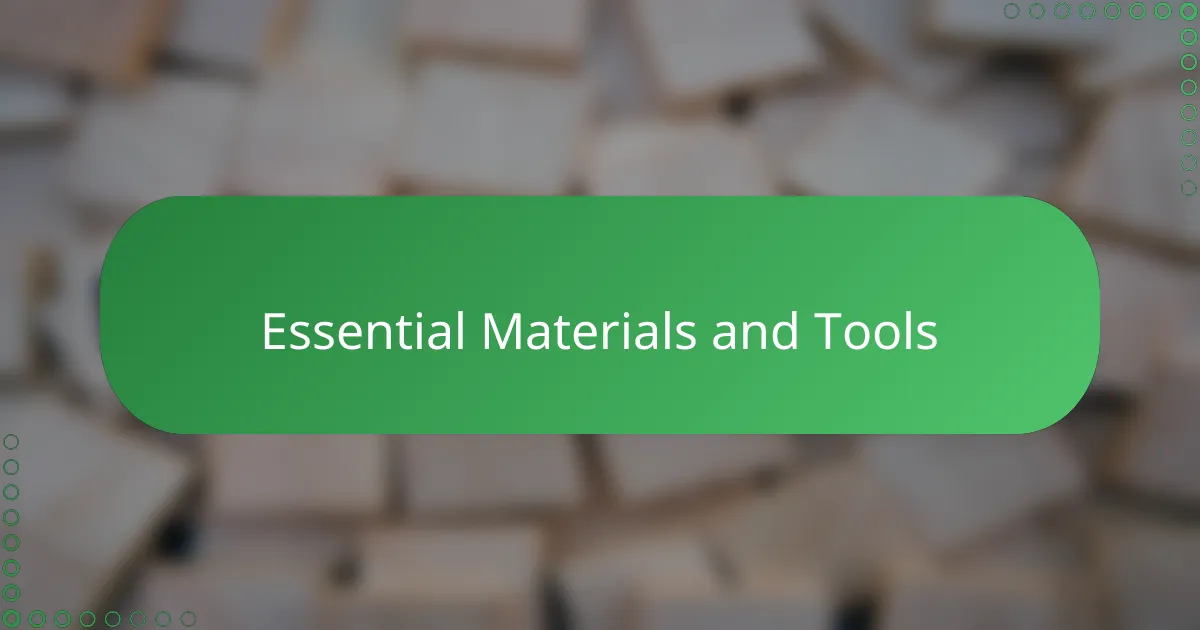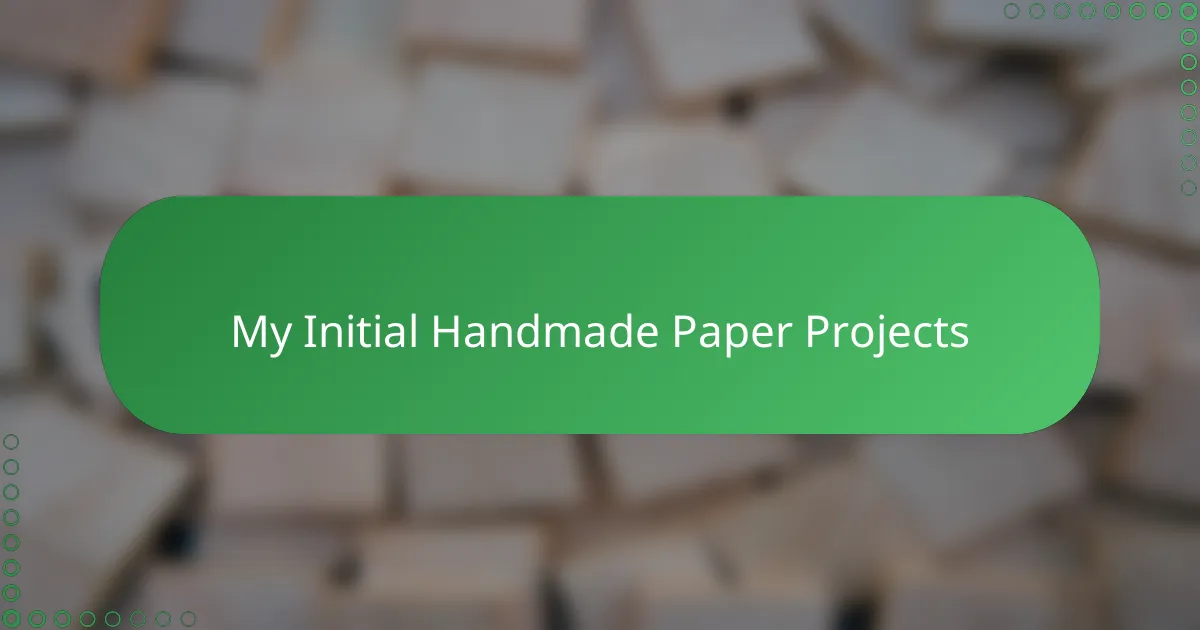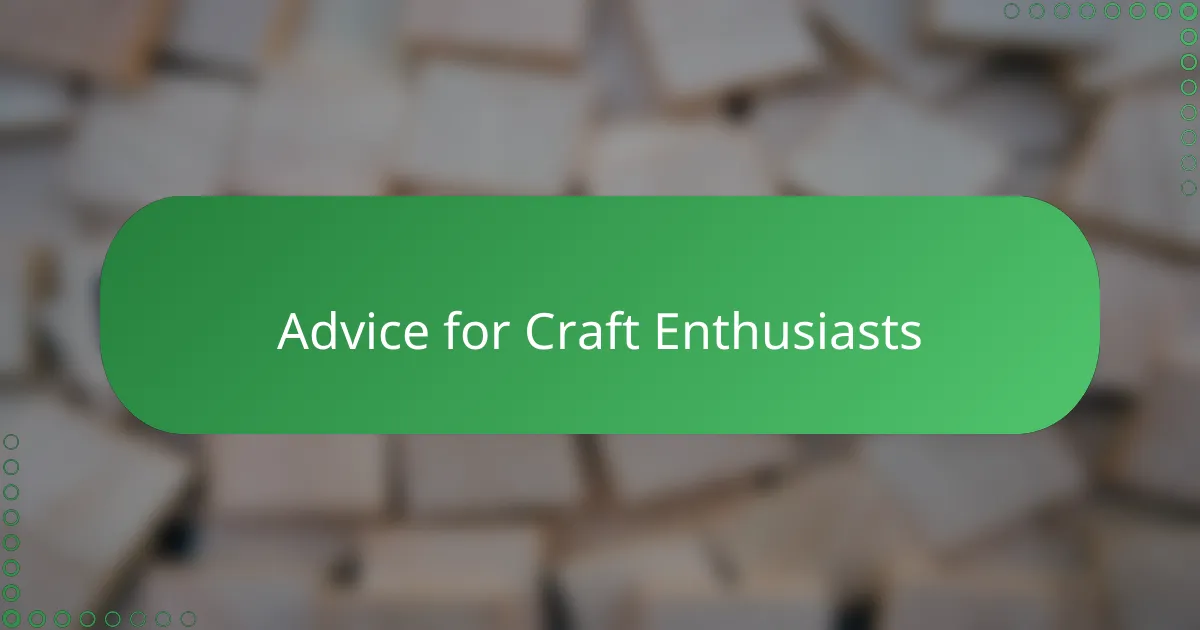Key takeaways
- Handmade paper crafting blends creativity with tradition, highlighting the beauty of imperfections and the unique character of each piece.
- Essential tools include a deckle and mold, household items for pressing, and quality fibers like cotton or recycled scraps for optimal results.
- Mastering basic techniques, such as spreading pulp evenly and the art of couching, is crucial for successful projects.
- Embracing patience, tracking progress, and treating imperfections as unique features can enhance the crafting experience and results.

Understanding Handmade Paper Crafts
Handmade paper crafts, to me, always feel like a bridge between creativity and tradition. It’s fascinating how simple fibers transform into textured sheets, each telling its own story. Have you ever held a piece of handmade paper and noticed how its imperfections add character rather than detract from it?
The process itself demands patience and a gentle touch, which I find surprisingly calming. It’s not just about the end product; it’s about appreciating the rhythm of dipping, pressing, and drying – almost like a meditative dance with nature’s raw materials. This tactile experience deepens my connection to the craft in a way machine-made paper never could.
Understanding handmade paper crafts means recognizing the value in every fiber and fold. It challenges me to slow down, to embrace imperfection, and to celebrate the uniqueness in every sheet. Isn’t that what true artistry is all about?

Essential Materials and Tools
When I first started with handmade paper projects, I quickly realized that having the right materials made all the difference. Fibers like cotton or recycled scraps became my go-to because they offered that perfect texture and strength I wanted in each sheet. Without good-quality pulp, the whole process feels like wrestling with soggy paper rather than creating art.
Tools are equally essential, and some might surprise you. A simple deckle and mold, for instance, became my best friends — they frame each sheet beautifully and help drain excess water evenly. I still remember struggling at first, trying to hold the mold steady, but once you get the rhythm, it feels almost magical, like you’re shaping paper out of thin air.
And then there’s the pressing and drying stage, where simple household items, like absorbent cloths and wooden boards, played a huge role in my setup. Would you believe that sometimes just a heavy book is enough to press out the water and smooth the texture? I found that these humble tools kept the process accessible and grounded, reminding me that the heart of handmade paper lies in its simplicity.

Basic Techniques for Beginners
Starting out with handmade paper, I quickly learned that mastering the basic techniques makes all the difference. One of the first skills I practiced was evenly spreading the pulp on the mold to avoid thin spots or clumps. It took a few tries, but that steady hand really set the foundation for every sheet I made after.
Another technique I found essential was the art of couching—transferring the wet paper from the mold to a flat, absorbent surface without tearing it. I remember my heart racing with anticipation as I lifted the mold for the first time, hoping the paper would hold together. When it did, that small success felt like winning a personal victory.
Pressing and drying might sound simple, but I discovered there’s an art to it as well. Applying just the right amount of pressure and changing the blotting cloths regularly helped me avoid wrinkles and speed up drying times. Have you ever felt that quiet satisfaction as a perfectly dried sheet emerges, smooth and ready for the next step? That moment keeps me coming back to this craft.

My Initial Handmade Paper Projects
My very first handmade paper project was both thrilling and a little nerve-wracking. I still recall nervously dipping the mold into the pulp, hoping the fibers would settle just right. When I lifted it and saw my uneven, slightly lumpy sheet, I felt a mix of frustration and pride—imperfection was my unexpected teacher.
At times, the process tested my patience more than I anticipated. Waiting for each sheet to dry felt like an exercise in mindfulness, especially when some came out with wrinkles or tears. Yet, every flaw told a story, reminding me that handmade means human touch, complete with its lovely quirks.
What surprised me most was how these early projects sparked a deeper appreciation for the craft. I found myself eagerly planning the next batch, curious to see how slight tweaks in technique could transform the paper’s texture and appearance. Doesn’t the journey from a simple pulp slurry to a tangible sheet feel almost magical? For me, that first try was just the beginning of a rewarding adventure.

Challenges I Encountered
I faced quite a few hurdles, especially trying to get the moisture balance right in each sheet. Too wet, and the paper wouldn’t dry properly; too dry, and it became brittle and cracked. Have you ever struggled with something that seemed simple but required a keen sense of timing? That was me, learning to read the delicate mood of the pulp.
Another challenge was dealing with the inevitable imperfections—tears, uneven textures, and unexpected wrinkles. At first, I found these flaws frustrating, wondering if my efforts were in vain. But over time, I realized these ‘mistakes’ gave each piece its unique character, turning setbacks into happy accidents.
I also battled with maintaining consistency, especially when making multiple sheets in one session. Juggling the pressing, drying, and proper layering often felt like a balancing act. Yet, each challenge taught me more about patience and the intimate dance of working with raw, living materials. Have you ever found beauty in trial and error like this?

Tips for Improving Your Projects
One tip I can’t stress enough is to experiment with texture early and often. I remember adding bits of dried flower petals and thin threads to my pulp—it felt risky at first, but the subtle dimension it gave my sheets made the effort worthwhile. Have you ever noticed how small changes like that can breathe new life into your projects?
Another thing that helped me tremendously was keeping a simple journal to track what worked and what didn’t. It might sound a bit formal for a craft, but writing down how much pulp I used or the drying time saved me from repeating mistakes. When you look back, it’s surprisingly motivating to see your progress mapped out that way.
Lastly, I found that embracing patience transformed not only my results but also my mindset. Instead of rushing the drying phase or skipping a step, I learned to enjoy the pauses and even consider imperfections as part of the story. Isn’t it freeing to let go and let the process teach you at its own pace? That shift made every sheet feel more like a personal achievement than just another piece of paper.

Advice for Craft Enthusiasts
When I first delved into handmade paper crafting, embracing patience was the game-changer for me. Have you ever felt tempted to rush through a step, only to realize that slowing down brings out better results? Trusting the process, especially during drying, taught me that good things really do take time.
Another piece of advice I’d share is to treat every “imperfection” as a unique signature of your creation. Early on, I struggled with uneven textures and small tears, but I soon realized these quirks gave my papers their own story. Isn’t it comforting to know that in handmade crafts, flaws can be fascinating features?
Finally, don’t hesitate to experiment boldly. I once tossed in colorful threads and flower petals without knowing if it would work, and those attempts became my favorite pieces. How often do we get to surprise ourselves in crafting? Giving yourself that freedom makes the whole journey so much richer.
